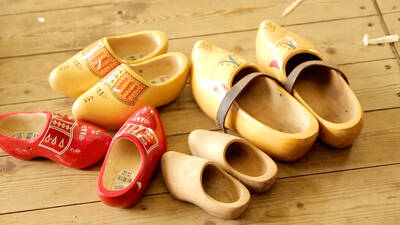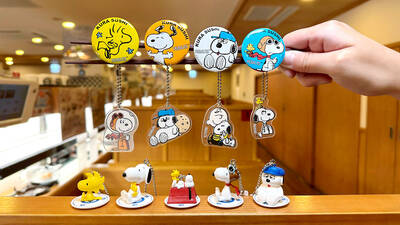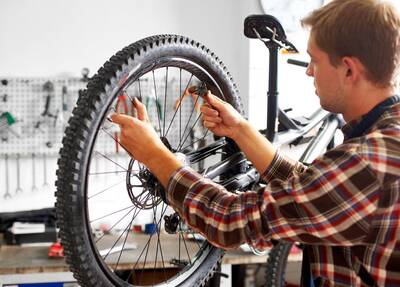歡迎閱讀《週末科學版》!我們每週六都要為你介紹可以在家中進行的有趣科學實驗。你可以在《科學日誌》中記錄自己做了哪些活動,這樣就可以將所學的記錄下來,比較這些結果,也許還可以利用它們來設計新的實驗!先看一下《科學日誌》的點子再開始吧。展開實驗之前,記得要獲得大人許可喔!
Before video games, television and the Internet, for many people the only source of home entertainment was the radio. Radio stations first appeared in the 1920s and rapidly spread due to huge public demand for “free” music.
The technology behind the spread of radio was the sending and receiving of radio waves. One reason why radio waves are so effective is because they travel easily through air, but can’t easily penetrate the earth’s atmosphere. That’s because the lower atmosphere is a good transmitter of radio waves, while the upper atmosphere deflects them back to ground level.
In today’s experiment you will conduct an experiment on some household items to find out how they fare at conducting radio waves.
What you will need: a radio controlled car and controller, a large outdoor area, aluminum foil, wax paper, rubber gloves and a plastic bag.
(JOHN PHILLIPS, STAFF WRITER)
在電玩遊戲、電視和網路出現前,許多人的家庭娛樂來源就只有廣播。廣播電台最早出現於一九二O年代,因大眾對「免費」音樂的廣大需求而迅速普及。廣播傳遞的原理就是利用無線電波的發送和接收。無線電波之所以如此有效地傳播,原因之一就是它們可輕易經由空氣傳遞,卻不容易穿透地球的大氣層;那是因為低層大氣是良好的無線電波傳導體,而高層大氣則會把無線電波反射回地表之故。
在今天的實驗中,你將測試部份日常用品對無線電波的導效果。
實驗所需:一台無線電遙控車和控制器、一處寬敞的戶外場地、鋁箔紙、料理用腊紙、橡膠手套和一個塑膠袋。
(翻譯:袁星塵)
Methodology
Step 1: Test the car and controller and make sure you have fresh batteries in both.
Step 2: Wrap the car’s antenna in the material you want to test, for example aluminum foil.
Step 3: Record whether or not the car moves.
Step 4: Change the material, and test again. Continue until you have used all the materials.
方法
步驟一:測試遙控車和遙控器,確認兩者的電池電力充足。
步驟二:把遙控車的天線用你想測試的材料包覆起來,如:鋁箔紙。
步驟三:記錄車子是否移動。
步驟四:更換材料後再測試一次。如此持續進行,直到測試完所有材料為止。
Variations
The chances are that your car will move regardless of the material you use, so you may want to be more scientific.
Variation 1: Measure out a straight line. It doesn’t matter how long it is, but about 25m would work well. Use a stopwatch to time how long it takes the car to travel the distance. One at a time, wrap the antenna in the different materials and time the car over the distance.
Variation 2: Find a large empty space. Drive the car in a straight line until the signal is so weak that the car stops. Measure the distance by pacing it out. Change the material and do it again.
Variation 3: Conduct a similar experiment on a radio. This time wrap the aerial in different materials and record the strength of the signal. Can you think of a way of objectively measuring the volume?
實驗延伸
不管你使用什麼材料,遙控車可能都會移動,因此你或許會想更精確地實驗。變化一:仔細量劃出一段直線距離,長短沒有關係,但二十五公分左右效果最佳。用計時碼表測量遙控車行駛這段距離所花的時間。分別用不同的材料包覆天線,並測量每次遙控車行駛這段距離所花的時間。
變化二:找個寬敞空曠的地方,操縱遙控車朝直線方向前進,直到訊號微弱到車子停下來為止。利用步長測量出這段距離,然後再換一種材料測試一次。
變化三:對一台收音機進行相似的實驗。這次,分別用不同的材料包覆收音機的天線,然後記錄每次訊號的強度。你能想出客觀測量音量的方法嗎?
Conclusion
Present your findings in a graph. From the graph you will be able to identify the materials that allow radio waves to pass through, and those that block them.
結論
將實驗結果製成一張圖表。從圖表中,你就能分辨出無線電波可以穿透過哪些材料,哪些材料又會阻擋電波。

When you think of the Netherlands, images of tulips, windmills, and iconic wooden shoes — known as “Dutch clogs” — may come to mind. These traditional shoes are rich in cultural significance. For centuries, Dutch clogs have been admired for their sturdy design and impressive craftsmanship, making them a fascinating symbol of Dutch heritage. Dutch clogs date back to the Middle Ages. During that time, farmers and laborers needed durable shoes to cope with the region’s damp and unpredictable climate and topography. Crafted from solid wood, such as willow or poplar, clogs offered outstanding protection. Their firm structure kept

A: The news says comic superstar Snoopy’s birthday is coming soon on Aug. 10. B: So he’s a Leo, and his birthday will fall on this Sunday. A: Cartoonist Charles Schulz created the comic strip Peanuts, featuring Snoopy, in 1950. And this year marks the character’s 75th anniversary. B: No wonder there are some big celebrations in Japan, Hong Kong and elsewhere. How about Taiwan? A: The “How Do You Do, Snoopy?” exhibition is taking place in Taipei. Let’s go to Shin Kong Mitsukoshi Department Store’s A11 branch to see the show. A: 新聞說,卡通巨星史努比的生日是8月10日耶。 B: 原來史努比是獅子座,本週日就是他的生日。 A: 漫畫家查爾斯舒茲1950年在《花生》漫畫創造了該角色,今年正好歡慶75週年! B:

Bilingual Story is a fictionalized account. 雙語故事部分內容純屬虛構。 “One DA-BEI... WU LONG... NAI?” Yujing smiled as the foreigner struggled to order. He looked like an embarrassed puppy. She repeated the order in Chinese, then English: “Oolong milk tea, large size. Half sweet, no ice?” she said gently. He beamed — the kind of full-face, sunshine smile that Latinos are famous for. “Yes! That! You are... lo maximo… the best!” After he left, Lily nudged her. “Nice save. You’re getting the hang of it.” Yujing had taken this summer job at the bubble tea shop to build confidence and get work

Dos & Don’ts — 想想看,這句話英語該怎麼說? 1. 學習滑雪應當循序漸進。 ˇ To learn to ski, one must go step by step. χ To learn to ski is step by step. 註:「循序漸進」是指學習滑雪的方式,錯句中以 step by step 等於 to learn to ski,顯然是不合邏輯的。Step by step 是慣用語,只能作副詞片語用。 2. 那騙徒害老王丟了工作,差點淪為乞丐。 ˇ The con man made Mr. Wang lose his job and reduced him almost to beggary. ˇ The con man made Mr. Wang lose his job and almost become a beggar. χ The con man made Mr. Wang lose his job and almost became a beggar. 註:主詞 The con man 並沒有變為乞丐,所以要變更第二個述語,或把 became 改為原形,承受使役動詞(causative verb)made 的結果,維持全句統一的主詞。 3. 她的心往下一沉,簡直站不住了。 ˇ Her heart sank and she could